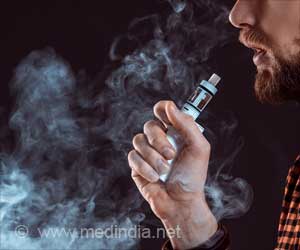Despite FDA's 2020 e-cigarette flavor restrictions, a significant number of US minors continue to vape. Understand the implications here.
- The FDA's 2020 flavor restrictions did not effectively prevent US minors from using e-cigarettes
- Over 75% of young users were found using e-cigarette flavors and products not covered by the FDA's enforcement
- The study highlights the need for comprehensive regulations, covering a broader range of products to prevent youth e-cigarette use
FDA's Shift in Strategy: Targeting Flavored E-Cigarettes to Protect Youth
The FDA's Center for Tobacco Products (CTP) issued enforcement guidance in January 2020 that "prioritized enforcement efforts against 'any flavored, cartridge-based ENDS [electronic nicotine delivery system] product (other than a tobacco- or menthol-flavored ENDS product,'" study authors wrote in JAMA Network Open (1✔ ✔Trusted SourceYouth Use of e-Cigarette Flavor and Device Combinations and Brands Before vs After FDA Enforcement
Go to source). The CTP's enforcement guidance was released to discourage children and young adults from using these items, which have grown in popularity in recent years. The CTP initially excluded disposable and tank e-cigarette products from its 2020 enforcement guidance; however, in July of that year, the agency issued warning letters to several disposable e-cigarette brands, requesting the removal of their "youth-appealing e-liquid products from the market," wrote first author Karin A. Kasza, PhD, a researcher in the department of health behavior at Roswell Park Comprehensive Cancer Center in Buffalo, New York, and colleagues.
Tracking E-Cigarette Trends Among U.S. Minors Post-CTP Enforcement
To see if e-cigarette use among US minors changed as a result of CTP's prioritized enforcement efforts, researchers evaluated data from the Population Assessment of Tobacco and Health (PATH) survey, which looks at tobacco use among people aged 12 and up in the US.According to the study, Kasza and coauthors reviewed PATH data obtained in 2019 and 2021, before and after the CTP's e-cigarette enforcement, among participants aged 12 to 17 years.
The main outcomes were transitions in e-cigarette use, flavor/device combination used, the brand used, nicotine use, and frequency of use between 2019 and 2021 among a longitudinal sample of 9088 participants aged 12-17 years in 2019, and the prevalence of e-cigarette use, flavor/device combination used, and brand used among those aged 14-17 years in 2019 (n=8771) and 2021 (n=5574).
E-Cigarette Usage Patterns Among US Teens
According to the findings, the bulk of the 9088 participants aged 12-17 years in 2019 were males (51%), with roughly 15% being Black, 24% Hispanic, 76% non-Hispanic, and 69% White. Researchers discovered that among kids aged 12-17 years who did not use e-cigarettes in 2019 (n=8315), 6.5% (n=531) began using them in 2021 (95% CI 5.9%-7.1%), with 76.8% (n=415) beginning with a combination other than a sweet cartridge (95% CI 72.2%-80.8%).E-cigarette use will continue. 47.8% (n=360) of participants aged 12-17 years who used e-cigarettes in 2019 (n=773) continued use in 2021 (ie, used e-cigarettes in the previous 30 days in 2019 and the previous 30 days in 2021). Researchers discovered that continuation rates were comparable among youths who used sweet-cartridge e-cigarettes (n=144 [51.5%]) and those who used any other known flavor/device combination (n=204 [47.6%]), but lower among those who did not know the flavor/device combination they used (n=12 [24.6%]).
Switching between e-cigarette flavors and device combinations. According to the study findings, 84% (n=121) of individuals who used sweet-cartridge e-cigarettes in 2019 moved to a different combination among those who continued to use e-cigarettes in 2021.
"These findings provide what is, to our knowledge, the first longitudinal evidence that CTP's partial e-cigarette enforcement efforts left open an avenue through which youth continued use of flavored e-cigarettes by using devices not covered by the enforcement guidance," the authors stated. "Restrictions and enforcement efforts that cover only a subset of products do not appear to be associated with preventing youth flavored e-cigarette use," Kasza et al. stated.
Reference:
- Youth Use of e-Cigarette Flavor and Device Combinations and Brands Before vs After FDA Enforcement - (https://jamanetwork.com/journals/jamanetworkopen/fullarticle/2808247)










